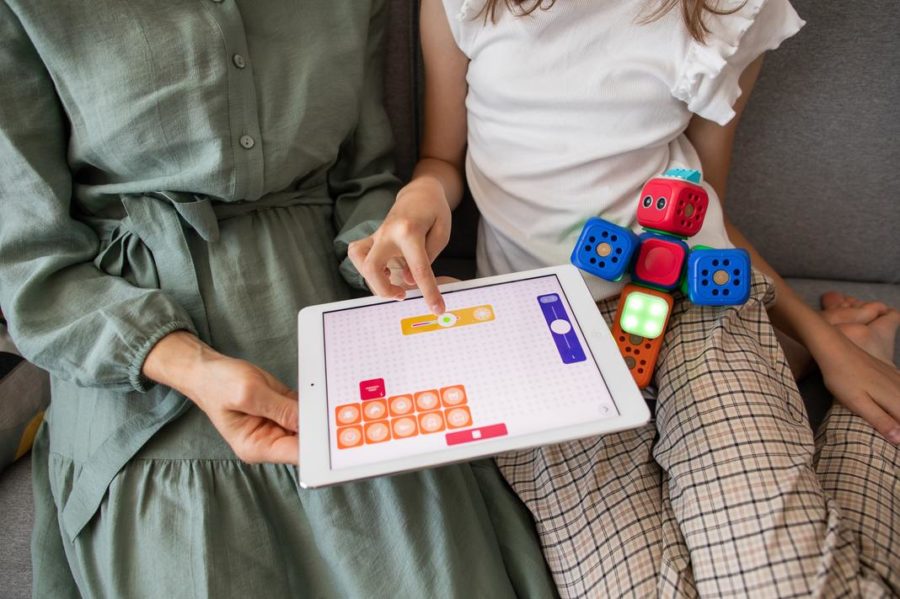When a child grows up, it undergoes a great deal of physics, mental and sociological development which helps it navigate and interact with the real world. Since a lot of growth happens during this period, the initial years are the crux of brain development. Unfortunately, some children do not achieve these stages of development as required, and their maturity does not match the level of other children of the same age. Occupational therapy comes to their rescue in such a dilemma. Keep scrolling down to know all about occupational therapy for kids.
What Is Occupational Therapy?
OT is a therapy to improve the skills and motor planning of the fine and gross motor. Children who strive for self-regulation and sensory treatment will also be helped.
The therapy is personalized to the individual needs of a child. Before it starts, an occupational therapist (an OT) looks at the strengths and challenges of a child, and the activities for which a child has difficulties. The OT then creates a children’s activity program.
Examples of the tasks and skills OTs might focus on:
- Self-care routines, including dressing up (fine motor skills and motor planning)
- Writing and copying of notes (fine motor skills, hand-eye coordination)
- Keep a pencil and monitor it with scissors (fine motor skills, motor planning)
- Throw and grab (gross motor skills like balance and coordination)
- Arrange a backpack (motor planning, organization skills)
- Responsive to sensory input (self-regulation skills)
Children who are dealing with motor skills appear to be uncoordinated and sometimes clumsy. Being deemed “different” might make them feel abused and victimized.
Discuss the strengths that can emerge from difficulties with your kid. To help your child be positive about change.

Image Source – Unsplash
When Does a Child Need OT?
Maybe you wonder,’ Does your child need occupational therapy in order to live his life? ’. Some children can bloom later than others and as such, they may not need any therapy. There are several times, however where occupational therapy for a child might be considered:
- Suffering from defects associated with birth
- Problems with sensory reception processing
- Have sustained injuries shortly after birth
- Failure to learn new concepts
- Arthritis, bone-related diseases, or so
- Developmental conditions such as autism or difficulties with behavior
- Has sustained severe levels of burns
- Kids suffering from cancer, palsy, or other debilitating diseases
Advantages Of Occupational Therapy For Kids
Kids occupational therapy provides a variety of advantages. The therapy is used for a wide variety of diseases and conditions and prepares children to lead a stable and normal life. There are some of the advantages as follows.
1. Sensory Processing Problem
It is commonly found that children with sensory disorders are unable to synthesize information in the five basic senses, i.e. sight, smell, touch, hear, and taste. These children can experience over-sensitivity, under-sensitivity, or both in different locations, such as school, home, or anywhere. These children also have trouble paying attention and being distracted by a noisy fire alarm and other such things. They’re just trying to escape the recesses and activities going on around them.
Occupational therapy may allow these young people to recover their skills and approach the problem in the right way.
2. Kids with Autistic Spectrum Disorder
Autism and SPD (Sensory Processing Disorder) are somewhat similar but not the same. Children with SPD do not suffer from autism, but the opposite may be true. A child suffering from SPD has difficulties engaging with other people poor play skills, less interest in activities, etc. The occupational therapy specialist can help to learn these skills by monitoring and creating a strategy for the actions of the child. The OT uses various sets of methods and plans, and there is no such perfect program. This could include interaction games, teamwork and awareness-building puzzles, and more.

Image Source – Pixabay
3. Fine and Gross Motor Skills
Gross motor skill requires the movement of muscles in the arms, legs, etc., while the use of small muscles in the forearm and fingers needs fine muscle skills. Children suffering from such skills can find it hard to walk, ride, and others. Occupational therapy may be used to treat the disease and potentially eradicate it.
4. Daily Life General Activities
The list continues with helping young people who have trouble with everyday tasks such as brushing, dressing, toileting, writing, drawing, etc. The therapy allows children to develop this desire to support themselves.
What To Look For When Choosing An Occupational Therapist
When looking for an OT, the greatest criteria is to ensure they have qualified accordingly. “The occupational therapist preferably needs to have a master’s degree in occupational therapy or at the very least a bachelor’s degree. There is a lot of misconduct today especially in pediatric occupational therapy, as there is more demand. Parents must make sure the therapist is not just a physiotherapist and has a degree in occupational therapy. Both of them are very different.”
The greatest misunderstanding about occupational therapy? It’s the misconception that it’s only for children with autism. Occupational therapists work to make a person independent of his or her occupation.
A specialist in adult neuro-rehab therapist deals with people with strokes, spinal cord injuries, Parkinson’s disease, and many other disorders to keep them independent of each other during their daily activities. It is a wide area of expertise. They support children with valuable life skills when it comes to children.”
Occupational Therapy Activities for Kids
1. Activities To Improve Sleep Quality
Some children face problems with their nighttime sleep. By making use of activities such as pre-sleep baths, body massages, therapies that connect sand and water, the use of certain smells to induce sleep by special products to minimize the impact of sounds and lights, they all are combined to tackle this problem.
2. Activities To Improve Coordination Of Limb
Some children may not be able to determine the motions of their limbs through their eyes or use a certain hand. Children are encouraged to take bats and balls to successfully smash it or catch a ball by assessing it well through their hand-eye coordinating practices. For children who cannot use either the left or the right side of the body in a decent way, bilateral exercises such as rope pulling, dough kneading, rolling pins, and so on can be very effective.
3. Activities that Build on Motor Skills
If a child has difficulty using his or her hands or feet properly, a lot of exercises focus on twisting the wrists, bending the toes, and so on. To help him cut the paper properly, special scissors can be used. For motion-related disorders, swimming or balancing may also be helpful when they walk on a thin platform.
3. Activities To Improve Visual Perception
Many kids find three-dimensional spaces in difficulty. This can be achieved through the creation and analysis of clay-shaped objects. Baking cakes in different alphabet shapes can aid more in using molds to fit them. Simpler puzzles can work wonders in that respect.
4. Activities that Encourage Cognitive Thinking
These children need the motivation to try things out in a different way. This may be accomplished by encouraging them to paint something from a distance with a cloth instead of a brush, or tossing coins in a box, or performing craft-related activities that assist with visual and limb development skills.
Children’s occupational therapy activities are tiny dozen. But a good understanding of your child and his difficulties is needed for their application. In addition, it is incredibly important to preserve the self-esteem of your child as he solves these challenges and plays a crucial role in making him into a successful person.
Also Read: Stages of Cognitive Development in Kids













